The tourism sector has lost $4.5 trillion and 62 million jobs, affecting communities’ living standards and well-being worldwide; meanwhile, consumers have changed their consumption behavior since COVID-19 in 2020.
Since then, we have been working tirelessly toward the recovery of the tour and travel sector. Hence, we identified five crucial facts to help us understand how and when recovery would be possible. Please keep reading and find it out!
1- Focus on authentic travel experiences with tourism techs in mind.
According to Sandra Carvao, Chief Marketing Intelligence and Competitiveness at the UN, as more consumers book trips directly, communities must be assisted in digitizing their systems and making their offers available for booking on digital platforms.
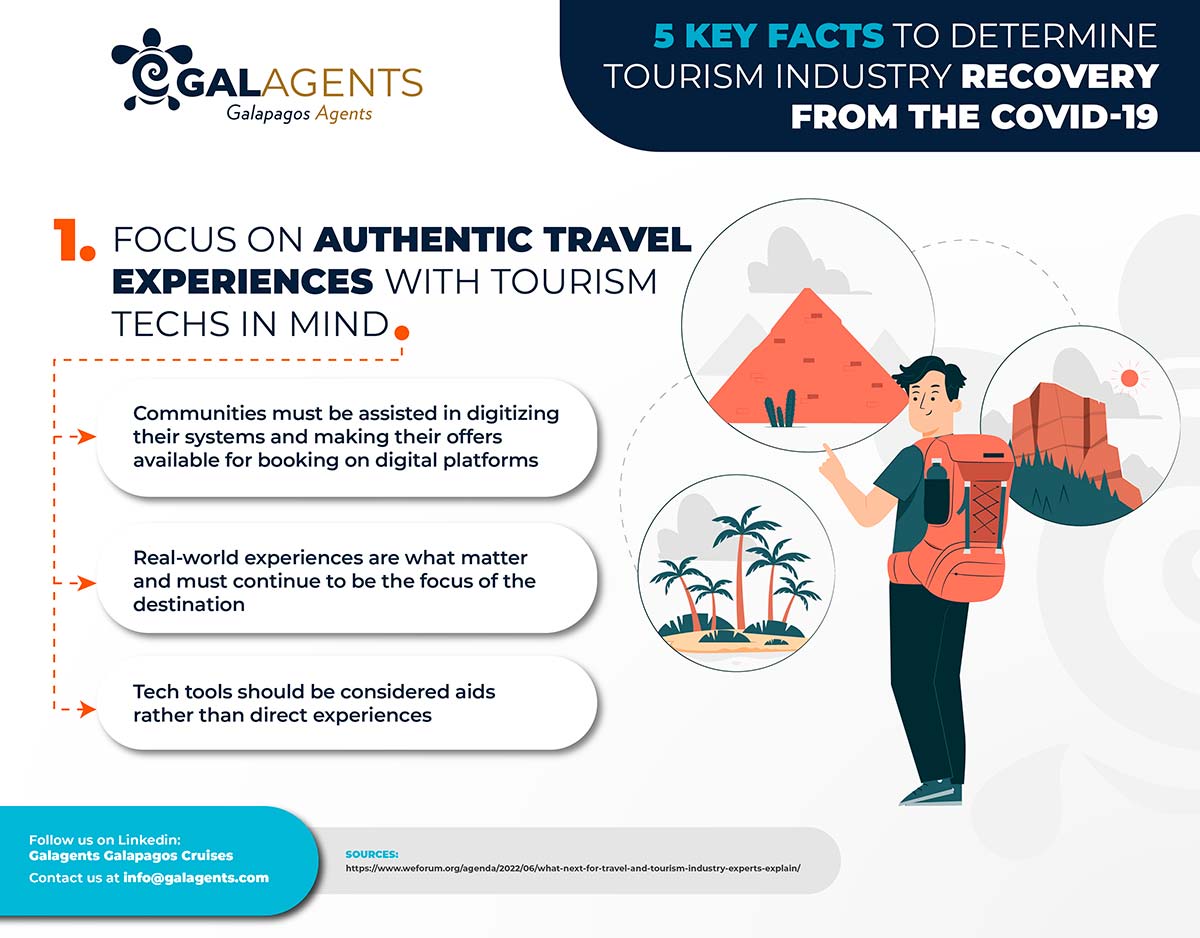
However, from the visitors’ standpoint, it is critical to underline that virtual experiences are a pleasant tool. Yet, real-world experiences are what matter and must continue to be the focus of the destination. Moreover, according to Liz Ortiguera, CEO of the Pacific Asia Travel Association in Thailand (PATA), the tech tools should be considered aids rather than direct experiences.
Don’t miss these articles to dig deeper into this theme:
- Understanding the equation between travel tech and travel agents
- Four Digital Marketing Trends to keep an eye on for 2023
- What is Meta-tourism, and how can it benefit the travel industry?
2- Focus on developing community-based tourism and the development of domestic tourism
Community-based experiences are created in collaboration with communities that gain from financial inclusion and, if activities are correctly structured, the reinforcement of their cultural legacy.
The purpose is really to put community and authenticity-in-culture activities at the heart of the travel experience, as Mrs. Ortiguera claims in an article published at the World Economic Forum.
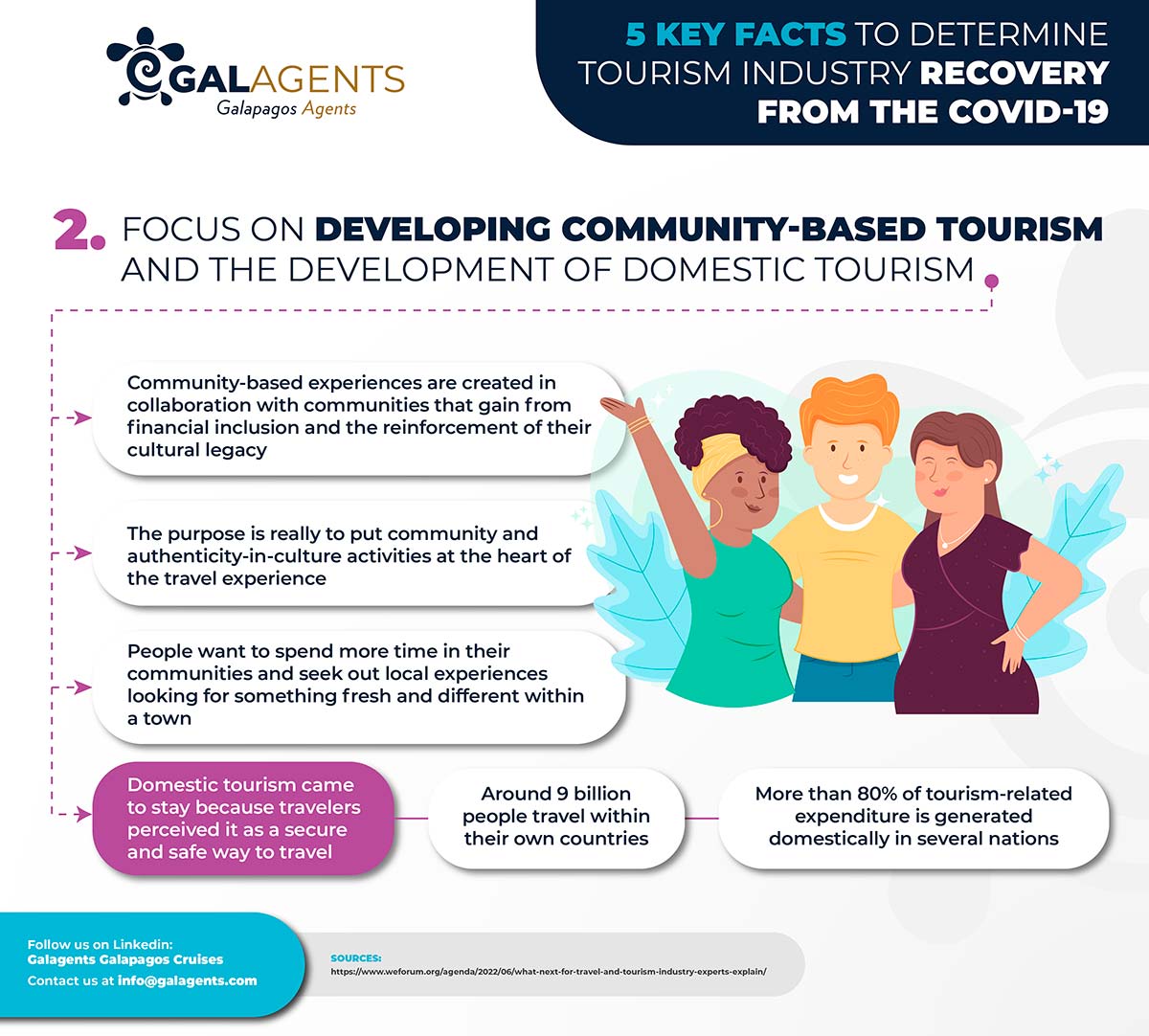
People want to spend more time in their communities and seek out local experiences looking for something fresh and different within a town while promoting its economic growth because the activities are not overrun by tourist areas.
Additionally, domestic tourism came to stay because travelers perceived it as a secure and safe way to travel. Not in vain, Sandra Carvao points out that around 9 billion people travel within their own countries. Indeed, she claims that more than 80% of tourism-related expenditure is generated domestically in several nations, including Germany, Spain, and even smaller economies.
If you want to broader your perspective on this theme, the following article is for you:
3- The rise of sustainable tourism practices
We have realized how fragile we are and our impact on nature, focusing now on vital things that used to be renegades. Thus, travelers are more conscious of their footprint on nature caused after each trip they take.
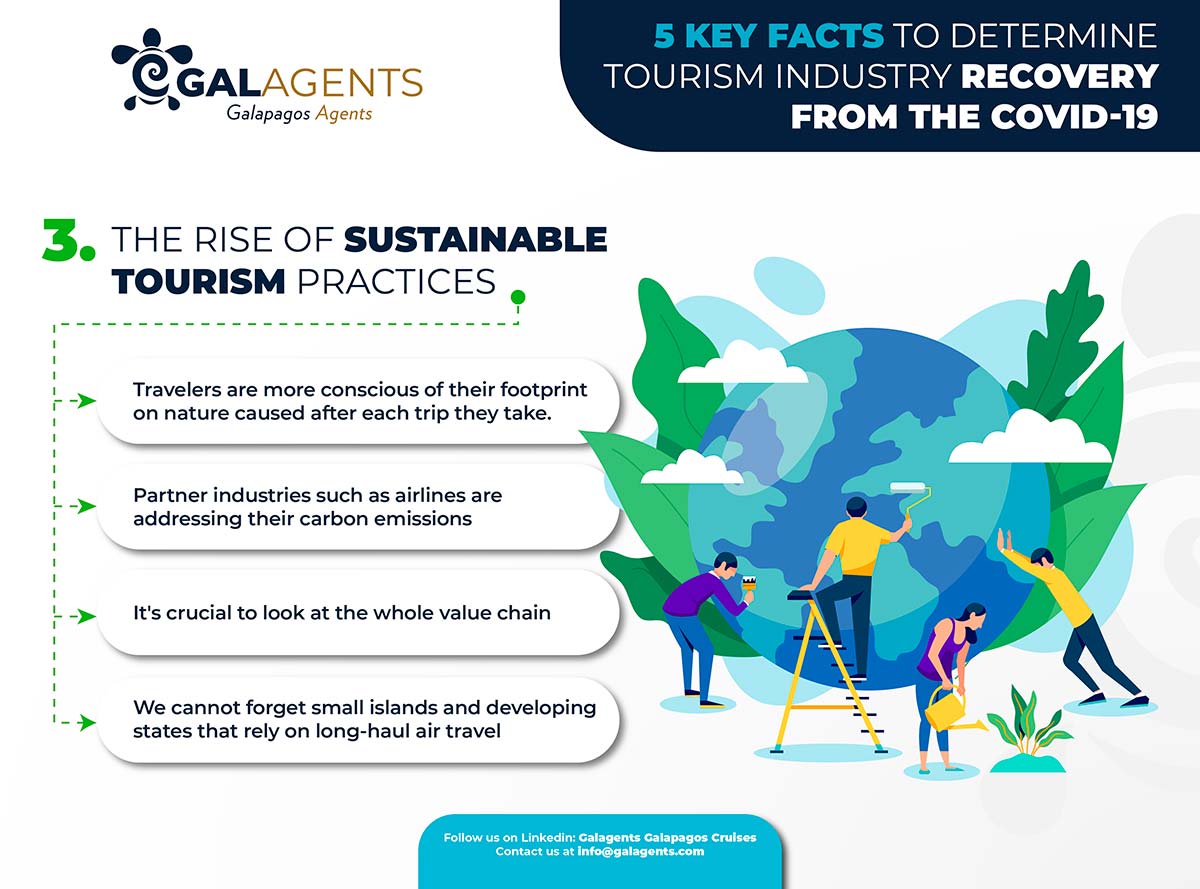
That’s why partner industries such as airlines are addressing their carbon emissions because transport is one of the key contributors to energy impacts and tourism. But, it’s crucial to look at the whole value chain. For example, we cannot forget small islands and developing states that rely on long-haul air travel. So, it’s essential to ensure that we invest in making the problem much less impactful.
Here is an article that explains which should be our focus on a sustainable tourism strategy as tour and travel businesses.
4- Tourism rebound relies on middle-class travelers.
As the World Economic Forum states, leisure travel was generally a luxury available only to a wealthy elite who could afford it. However, the declining costs and an expanding global middle class have fueled the tourism surge in recent decades.
According to a Brookings Institution estimate, roughly 140 million people have joined the middle class yearly. Thus, about 88% of the next 1 billion people to join the middle class will be living in Asia.
This indicates that regions other than the conventional North American and European ones will account for the majority of the rise in international travel; these markets include not just Asia but also Africa and the Middle East.
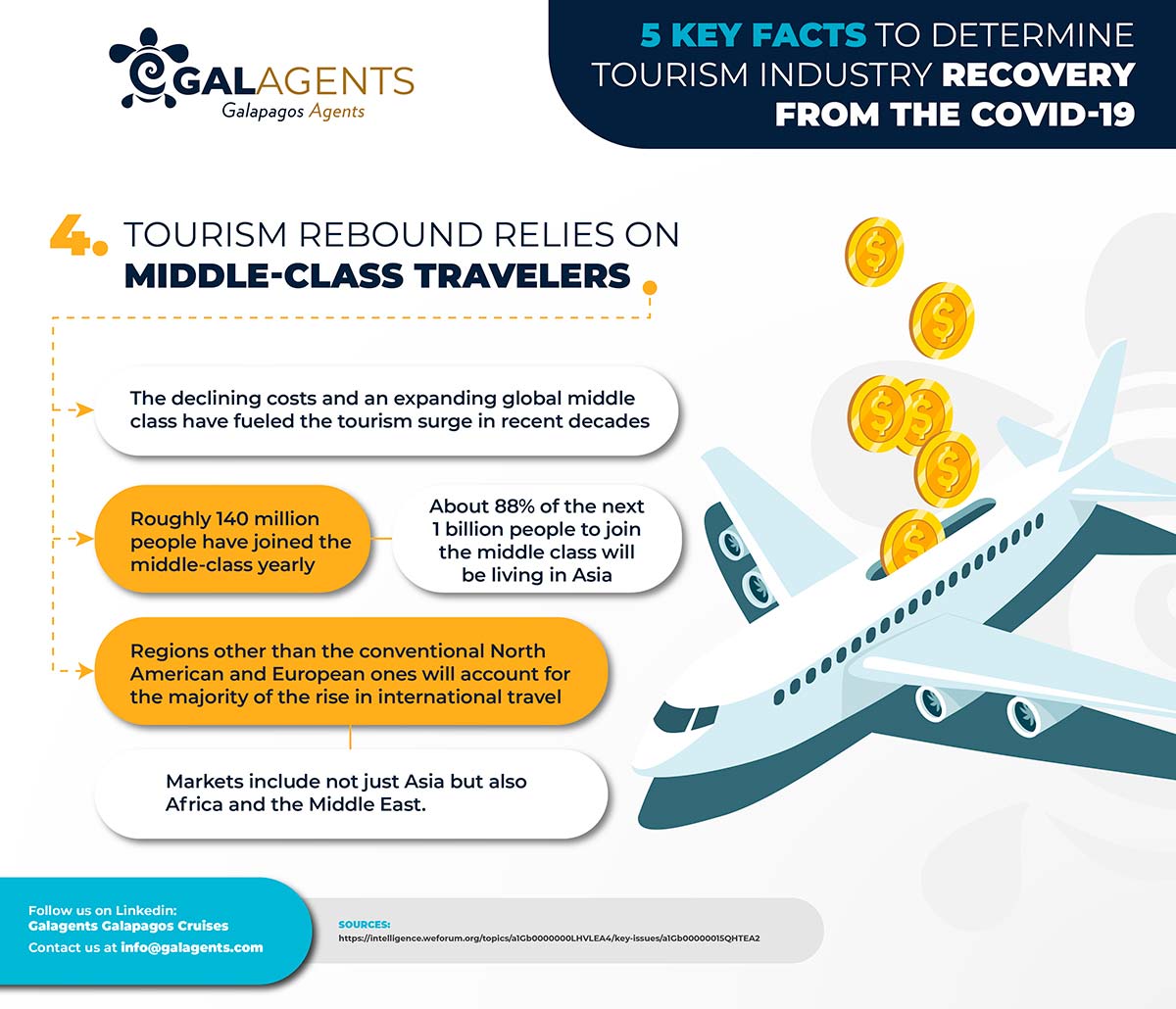
Angola, Brunei, Myanmar, Oman, Mozambique, and Viet Nam are among the top 10 locations expected to have the largest growth in leisure travel spending between 2016 and 2026, according to the World Travel & Tourism Council.
According to the 2019 Boomer Travel Trends report published by the AARP, a US-based organization focused on the elderly, baby boomers have been spending more than $6,600 on travel annually on an individual basis due to their desire to discover new experiences and their disposable income.
5- Close to the final recovery of the tourism industry
That is the fundamental question we have had for over two years after COVID-19’s emergence.
Reuters recently quoted the World Travel and Tourism Council (WTTC), which states that the global travel and tourism industries are expected to recover to pre-pandemic levels in 2023 and expand at a rate that will outperform global GDP growth.
From 2022 through 2032, the industry is predicted to grow at a 5.8% annual average pace, compared to a 2.7% increase in global GDP, and to create 126 million new employments. However, China’s “zero COVID” policy and ongoing lockdowns have hampered foreign travel and global trade recovery.
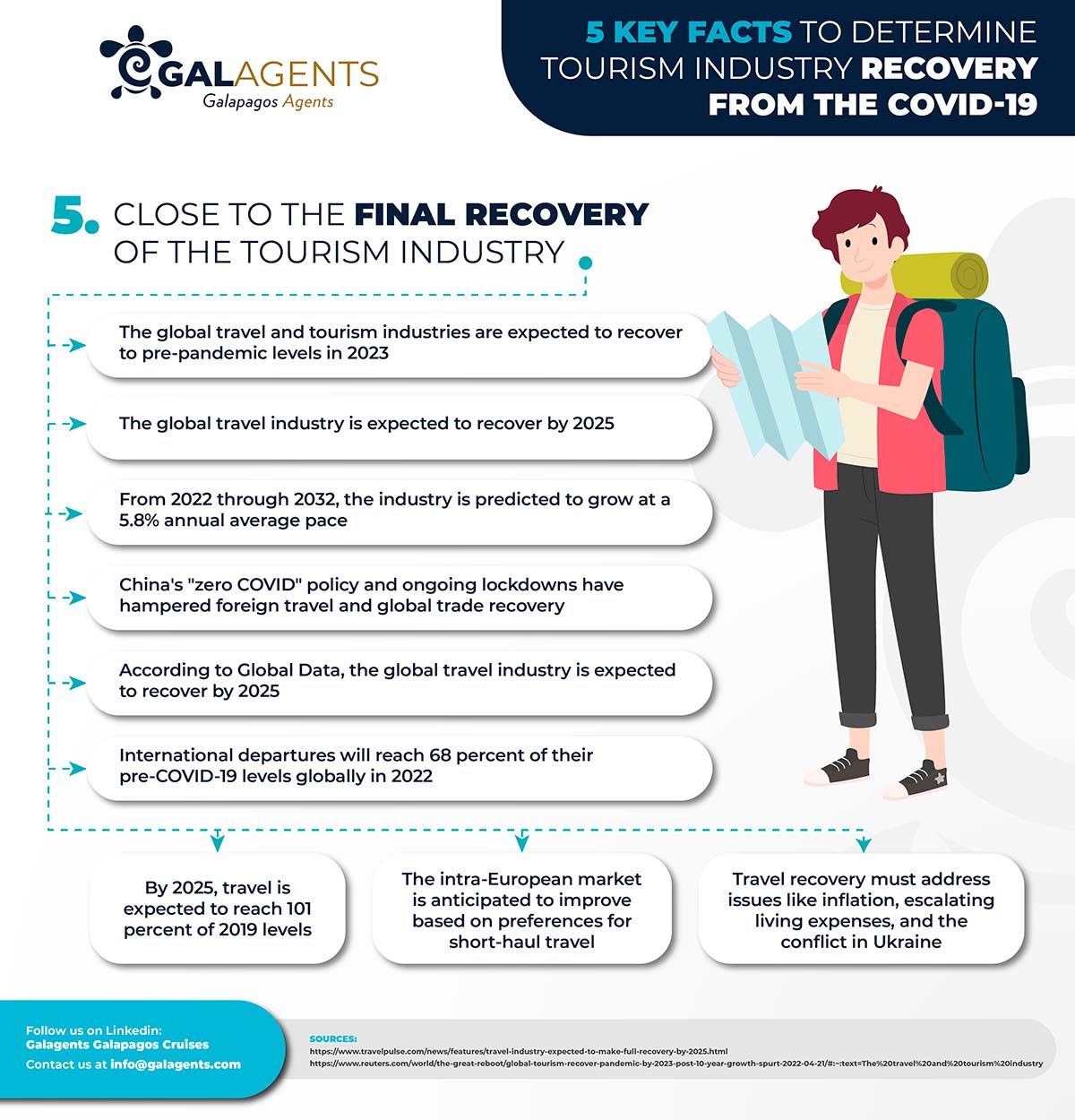
Do you want to download these infographics? Do it here
On the other hand, according to new research from Global Data, the global travel industry is expected to recover by 2025. The study found that international departures will reach 68 percent of their pre-COVID-19 levels globally in 2022 and are expected to improve to 82 percent in 2023 and 97 percent in 2024. By 2025, travel is expected to reach 101 percent of 2019 levels, with international departures projected to reach 1.5 billion.
According to Hannah Free, travel and tourism analyst at GlobalData, “In 2022, outbound departures from North America are projected to reach 69 percent of 2019 levels, before making a full recovery by 2024, at 102 percent of 2019 levels, ahead of other regions.”
The intra-European market is anticipated to improve based on preferences for short-haul travel. However, travel recovery must address issues like inflation, escalating living expenses, and the conflict in Ukraine. Mrs. Free also stated that international departures will be 98% of 2019 levels by 2025.
What do you think about these 5 points and the recovery forecast? Let us know your comments in the comment box.

